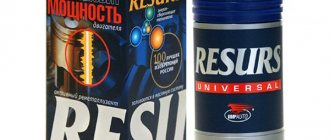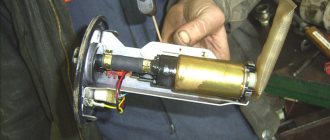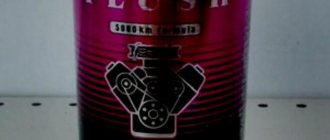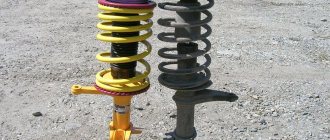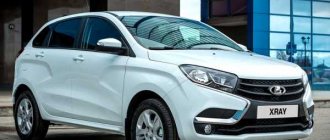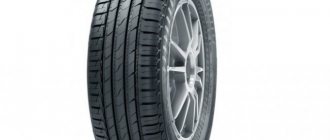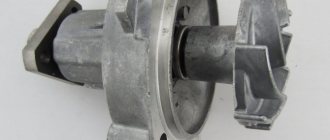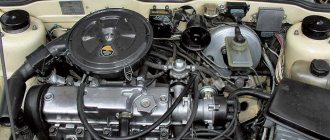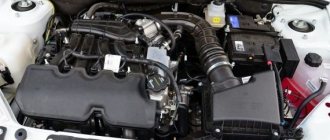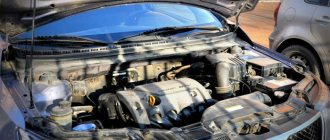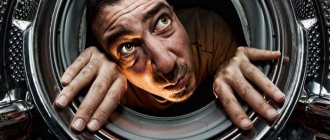Research shows that when buying a car, a potential owner is most often interested in the service life and reliability of the engine, while fuel consumption and dynamics fade into the background. That's why the engines sell millions, and the list of cars on which they are installed has been in demand for decades, even when these cars are already rolling off the assembly line.
It should be noted that an engine that travels this distance with only routine maintenance - changing the oil, filters, belt or timing chain - can be considered a million-dollar engine. But all conditions for maintenance and fuel quality must be met, since, if desired, you can easily kill any millionaire.
Motors that travel a million kilometers with at least one overhaul are not included in our rating. Conventionally, engines can be divided into two large groups - diesel and gasoline, so in the rating we will divide them into these groups.
What is a millionaire engine
Before looking at which cars are equipped with a million-dollar engine, it’s worth considering what they are. Such power plants are capable of serving more than a million kilometers, which is why the corresponding name arose. To achieve such performance, the motor must have a number of characteristics, such as maintainability and durability.
At the same time, millionaires do not necessarily have to operate without a single repair during this entire service life. This is due to the fact that the manufacturer does not provide a service life of 1 million kilometers for all parts. The most reliable Japanese engines that allow achieving such indicators are produced by Toyota. But not every unit is capable of producing such a resource.
Such engines are installed on cargo, heavy, commercial and agricultural equipment. It is also important to take into account timely maintenance of the car, as well as the driver’s driving style.
Engines are designed for long-term operation
Let's sum it up
On the market you can find a really large number of different representatives of million-dollar engines. But most of these units ended their existence in 2007, when the company moved to a new era of power plants. In the new generation, the cylinder walls are so thin that repairs become simply impossible. So the old classic millionaires are only available on the secondary market. However, many models are sold today in used form with mileage up to 200,000 and with a huge residual resource.
However, when buying a car, you need to look not only at the engine, but also at all the other capabilities of the car. Sometimes mileage doesn’t mean anything, but the quality of service and normal operation are worth evaluating when purchasing. You can find unexpected data about Toyota engines, which become the reason for not very successful operation. For example, using excessively poor fuel with impurities can damage the newfangled VVT-i system and lead to other problems in the system. So a millionaire does not always remain so throughout his life. Have you encountered the engine models presented above in your experience?
What cars can travel a million kilometers?
Among the leaders (according to surveys and reviews of the global population) are:
- American cars;
- Japanese cars;
- German concerns Volkswagen, Mercedes Benz, BMW.
There are also references from other manufacturers, but these are more exceptions to the rule than a trend. There are cars with mileage of about half a million kilometers. And there are actually few of those with an “honest” million on the speedometer. There are no such ones among Russian manufacturers. The export versions of AvtoVAZ came closest to large limits. Their reliability was an order of magnitude higher than that of models for the domestic market.
Not all engines that are designed to reach a million kilometers can achieve this. How operation and maintenance occurs is very important. Many units do not live up to half of their design life. This is due to harsh environmental conditions and untimely troubleshooting.
Gasoline or diesel "millionaire"?
When asked who is better or cooler, one can argue for a long time and most often to no avail. Facts and statistics help best in such cases. So it turns out that a “millionaire” engine most often runs on diesel fuel. Among the leaders in terms of long mileage are American cars, as well as Japanese and European ones. And there are quite a lot of them among the old models of Mercedes, WV, Toyota, Nissan. Previously, there were fewer electronic components, which have less fault tolerance.
The reliability of a particular product directly depends on the quality of its components or blocks. Contrary to the belief that everything simple is more reliable, BMW creates the most complex units of the highest quality. The service life of many engines of this company is more than a million kilometers.
Among the most reliable gasoline options, easily passing a million in good conditions, is the Japanese car manufacturer Toyota. Nissan and Mitsubishi power units are at a high level. Let's take a closer look at Japanese engines.
Engine choice: gasoline or diesel
A controversial topic among drivers is which engine is the most reliable: gasoline or diesel. There are only 3 types of power plants capable of achieving a millionth resource. These include:
- Diesel, most of which are considered very reliable and durable.
- Gasoline, made in the form of an inline 4. Their service life is comparable to diesel models.
- Gasoline inline 6s. Despite the high power levels they develop, such models have virtually no vibrations while driving.
Occasionally, domestic GAZ cars were able to overcome the mileage threshold of a million kilometers. This situation occurred with type 406 motors. But the most reliable are diesel engines, which is due to their design.
Volkswagen 1.9 SDI/TDI
Production: 1991-2006 (in some markets until 2010).
Application: Audi 80 B4, Audi A4 (1st generation), Audi A3 (1st generation), Audi 100/A6 (C4), Audi A6 (C5), Seat Alhambra, Seat Ibiza, Seat Cordoba, Seat Inca, Seat León, Seat Toledo, VW Caddy, VW Polo, VW Golf, VW Vento, VW Bora, VW Passat, VW Sharan, VW Transporter, Ford Galaxy (1st generation), Škoda Fabia and Škoda Octavia (1st generation).
Without a doubt, this is one of the most famous, but perhaps the most controversial engines on our list. The SDI/TDI engines are based on the old 1.9 D/TD. They received direct injection, the thermal load on the cylinder head was reduced and a Bosch rotary pump was installed, although it was sensitive to fuel quality.
The reliability and durability, especially of the simple naturally aspirated 1.9 SDI versions, deserves respect. The engine is capable of traveling more than one million kilometers without major investments. We do not take into account the frequently mentioned problems with the mass air flow sensor.
Paradoxically, the most reliable turbocharged variant is only the 90 hp TDI with a maximum torque of 202 Nm (coded 1Z or AHU). This turbodiesel appeared in the early nineties and was used in Audi, Golf III, Passat B4, Seat until 1996-1997.
Among the Skoda Octavia, the best TDI is considered to be the CMA. Its small constant-geometry turbocharger demonstrates much greater survivability than the 90-hp ALH's variable-geometry supercharger. The latter was prone to blade freezing, just like the 110 hp version.
The only weak point of SDI/TDI, especially in the early years of production, is the crankshaft damper pulley.
The best million-dollar engines: what are they?
Millionaire engine Toyota 3S-FE
- Diesels have gained a reputation as reliable and durable engines. And they really have a good margin of safety, despite the fact that their design is quite simple. Mercedes-Benz OM602 and BMW M57 are equipped with indestructible engines.
- Gasoline in-line fours compete in popularity with diesel engines. However, their design is a little simpler, and even in the most severe frosts, gasoline will not freeze. Representatives of this category include Toyota 3S-FE, Mitsubishi 4G63, Honda D-series, Opel 20ne.
- Gasoline in-line sixes are distinguished by their simplicity of design, power and lack of vibration. Cars with million-dollar engines in this category are represented quite widely - Toyota 1JZ-GE and 2JZ-GE, BMW M30 and M50.
- V-shaped “eights” are large units that cannot boast of an extremely long service life. However, all these statements should not be applied to the “Americans”. There are not many models with V-shaped units that can easily cross the half-million threshold; a typical representative is the BMW M60.
Famous V-8s
The engines of this group, although not very famous for their reliability, do not cause worries with minor or major breakdowns. V8 units capable of easily exceeding the 500 thousand kilometer mark can be easily listed on one’s fingers. The Bavarians again occupied the cell thanks to their M60 V8, a huge plus: a double-row chain, nickel coating of the cylinders, as well as an excellent engine safety margin. Thanks to the nickel-silicon coating of the cylinders (more often found as Nikasil), it makes them virtually indestructible. As practice shows, up to the mark of half a million kilometers, the unit does not need to be disassembled, and there is no need to replace the piston rings. The downside is fuel; you need to carefully monitor the quality of gasoline, since the nickel coating is afraid of sulfur in the fuel. In the USA, because of this problem, they switched to a softer protection technology - Alusil. The M62 is considered a modernized modern version. Installed on BMW 5th and 7th series.
How is engine reliability determined?
Many people are interested in the question, which engine is the most reliable? There is no single correct answer. To begin with, it is worth understanding what the concept of reliability consists of.
To put it simply, the concept of reliability includes:
- wear resistance;
- possibility of repair;
- trouble-free operation.
The first point determines the wear rate of engine parts during operation. The quality of the factory assembly and the quality of the engine oil used play a big role here. There is not much point in explaining the possibility of repair. As for reliability, this concept speaks of the ability of the unit to perform its functions under any influence. An example of such work is the easy start of a car engine after an accident that has been parked outside during the winter. This happens on well-assembled engines.
When considering the issue of reliability, it is important to understand that the car engine is not operated in a vacuum. Fuel equipment, a cooling system and a lot of electronics are necessarily connected to it. Based on this, it is easy to determine that the simpler the design, the higher the reliability.
The less load on the engine, the longer it will work. Such a unit will also be more reliable. This is why low-speed diesel engines without a turbine are reliable. What about the petrol options? Let's consider this issue in more detail.
U2 I4
Engineers from Toyota and Hyundai are constantly improving the dynamic qualities and reliability of their power units.
At the same time, these manufacturers focus specifically on the Russian market. The main efforts are directed towards improving the fuel system, which can “digest” even low-quality diesel fuel.
The joint products of well-known automobile corporations are distinguished by their endurance, durability, and high efficiency.
Reliability and simplicity of design attract domestic car enthusiasts. Resistance to temperature changes, adverse weather conditions, unpretentiousness to motor oil and fuel quality only increase the popularity of this engine in the domestic automotive market.
Millionaires are the most reliable engines of our time
Mercedes OM651 diesel engine
Are the “millionaires” irrevocably forgotten? No, even though “disposable” cars have become fashionable today. I drove it for 3-4 years, sold it and went to the dealership to buy a new “swallow”. What's there to hide? In fact, there are unsuccessful models, but not all are like that. People use a vehicle for 5-7, and sometimes even 10 or more years, and some even buy a car second-hand.
In this regard, millionaires are the most reliable engines of our time. But which one to choose and not make a mistake? Leaders can be distinguished by class. It’s worth saying that more expensive models are not well suited for hard use, but you shouldn’t ignore them either, because there are really worthy options.
- The small class is represented by domestic and foreign cars. They are practical and not burdened with various electronics and unnecessary functions. The undisputed leader in this category is the K7M from Renault, with the VAZ-21116 and Renault K4M slightly behind it.
- The middle class is represented by such names as Z18XER, Renault-Nissan MR20DE/M4R, series of engines from Hyundai/Kia/Mitsubishi G4KD/4B11.
- Junior business class. The models mentioned above are popular here, as well as the more powerful Toyota 2AR-FE, G4KE/4B12 from Hyundai/Kia/Mitsubishi.
- Senior business class is a car that cannot be called cheap. The motors are distinguished by their complexity and power, but are not endowed with special endurance. Leaders in this category include Toyota 3.5 series 2GR-FE and 2GR-FSE, Volvo B6304T2, Infiniti VQVQ37VHR. You can’t go past the diesel Mercedes E class in the W212 body and with the OM651 engine.
- The executive class cannot be cheap, because cars are crammed to capacity with the latest innovations. It is impossible to name the best among them. For example, the Germans are famous for their special attitude towards diesel engines and try to make them reliable (a striking example is the million-dollar Mercedes engine), while the Koreans and Japanese focus their work primarily on gasoline engines.
Modern million-dollar engines continue to be produced by leading manufacturers today. The trends have changed a little, because if previously the first lines of the ratings were occupied by European and American manufacturers, today Japanese engines with million-plus units are entering the arena.
Suzuki 1.3/1.5/1.6 DOHC "M"
Production: since 2000.
Application: Suzuki Jimny, Suzuki Swift, Suzuki Ignis, Suzuki SX4, Suzuki Liana, Suzuki Grand Vitara (1.6), Fiat Sedici (1.6), Subaru Justy III.
The M series engines include small capacity engines 1.3, 1.5, 1.6 and 1.8. The latter is intended exclusively for the Australian market. On the European continent, the power unit is found in almost all small and medium-sized Suzuki models that appeared at the turn of the millennium, and in the Fiat Sedici 1.6, which is a copy of the Suzuki SX4. The mechanical part of the engine is very reliable and durable. Even the VVT variable valve timing system, used by most engine modifications, does not cause any complaints. It is not present only in the 1.3-liter version intended for Ignis and Jimny until 2005, and the old 1.5 modifications for SX4.
The timing chain drive is reliable. Minor deficiencies include small oil leaks through the crankshaft oil seal. More serious malfunctions practically never occur.
Real stories
There is usually a lot of noise around engines that have traveled a large number of kilometers without capitalization. How true these stories are is a question, but they are 100% interesting.
Many, for example, remember the story of the 2006 Lexus LX 470, officially sold by a Russian dealer. The SUV has been used all its life as a corporate vehicle and by 2018 had driven a million. It was serviced only at a dealer service station. The list of repairs performed includes replacement of the radiator, generator and air conditioner.
Another case with GAZelle from Orenburg. The minibus has been in operation as a minibus since 2006, covering 700 km every day along the intercity route Orenburg - Pervomaisky and carrying 15 passengers. In six years, a million kilometers have passed without major engine overhaul. The owner of the champion minibus performed regular maintenance every 10,000 km, servicing it at an official dealer. By the way, for the record run he received a new minibus as a gift.
There are many stories to be learned at the High Mile Club. On his list there are, for example, two Honda Accord EX with mileages of 1,876,151 and 1,740,316 km, Tundra and Lexus LS400 with mileages of 1,609,344 and 1,443,582 km.
Myths about super-reliable engines
The reliability of a car engine is a relative concept, since not everything depends on the design features of the power unit. The same internal combustion engine, even if it is a three-million-dollar engine, can be quickly disabled in inept hands with careless treatment. At the same time, a motor of not the most successful design can last quite a long time, but for this you need:
- fill in high-quality motor oil that meets the technical specifications, preferably always the same brand;
- change the oil according to the regulations;
- Do not overheat the internal combustion engine under any circumstances;
- do not allow the engine to operate at increased loads (at constant high speeds).
If you follow all operating rules, the engine will run for a long time.
The times when diesel fuel was used only on ships and in heavy trucks have long since sunk into oblivion. Now this type of fuel has become an integral attribute of a modern passenger car. And the current units have nothing in common with the engines produced in past times, which were characterized by slowness, low power, an unpleasant smell of diesel fuel and black smoke.
Modern diesel engines are very different from their ancestors
The first appeared in the pre-war period. They were too noisy, required high-quality fuel and required frequent maintenance, which was expensive. Modern engines running on such fuel are quite economical and have high power. They can make life easier for their owner and bring him a lot of benefits.
Which cars have a million-dollar engine?
But the list of vehicles with million-dollar engines is not so small. The time has not passed so far when the world was literally captivated by the desire to equip a car with an indestructible engine. Moreover, certain companies lived by this desire until the new millennium. Which cars have million-dollar engines? The list follows:
- Mercedes-Benz OM602.
- BMW M57.
- Toyota 3S-FE.
- Mitsubishi 4G63.
- Honda D-series.
- Opel 20ne.
- BMW M60.
- Toyota 1JZ-GE and 2JZ-GE.
- BMW M30.
- BMW M50.
The most reliable gasoline inline fours
Russian drivers, as before, prefer gasoline engines. In winter, gasoline does not freeze, and the design of a gasoline engine is simpler. In our top, diesel engines turned out to be relatively large, but among the “gasoline leaders” there will also be smaller engines, ordinary in-line “fours”.
The list opens with the Toyota 3S-FE engine from the well-known S series. In it, this unit is considered the most reliable and unpretentious in operation. The characteristics - volume 2.0, 4 cylinders, and 16 valves - are very typical for engines of the 90s. The camshaft is driven by a belt, injection is simple distributed. It was on the assembly line from 1986 to 2000.
Power ranged from 128 to 140 horsepower. strength Later and more powerful versions of this engine - 3S-GTE and 3S-GE also have excellent technical characteristics. The 3S-FE engine was installed on many Toyota cars: Toyota Celica T200 and Toyota Camry (1987-1991), Toyota Corona T170 and T190, Toyota MR2 and others, and the 3S-GTE (turbocharged) was also found on Toyota Altezza, Toyota Caldina .
Observant mechanics note the extraordinary endurance of this motor, despite intense loads and poor maintenance, intelligent, well-thought-out design and ease of repair. If such an engine is properly maintained, the output will delight you - 500,000 km without major repairs!
Japanese 2.0 petrol engine from a well-known family. The first version rolled off the production line in 1982, and its copies and successor models are still being produced today. At first, the engine had a single camshaft (SOHC) with three valves per cylinder, however, starting in 1987, a new DOHC version with 2 camshafts was released. The latest version of this engine was installed on the Mitsubishi Lancer Evolution IX. In addition, the engines of the family were also useful for cars of other brands - Kia, Huyndai and Brilliance (China).
Having gone through a series of upgrades, the latest version of the engine has complex power supply, supercharging, and also systems. After the upgrades, the engine did not become easier to repair, but maintainability remained at an acceptable level. The number of “millionaires” includes only naturally aspirated versions, although turbocharged engines have an excellent service life comparable to their competitors.
Diesel engines
It is believed that the diesel engine itself is more reliable. Let's consider 5 time-tested units.
Volkswagen 1.9 TDI
These engines are also capable of approaching the 2,000,000 kilometer mark, subject to routine maintenance, monitoring the condition of the turbine and the attachment belt tension roller. This legendary diesel engine with a power range from 90 to 150 horsepower appeared in 1991 and was produced in various modifications until 2010. It was installed on Polo, Golf, Passat, Sharan and Touran models, on Audi 80, A3, A4, A6, most Skoda and Seat models. The minimum service life for which the motor is designed is 300,000 km.
Mercedes-Benz OM602
One of the most famous and reliable diesel engines. It was installed on models W124, W201, W210, G-class SUVs, T1 and Sprinter minibuses from 1985 to 2002. The power of engines with a mechanical Bosch fuel pump is not their strongest feature - 130 hp. maximum, but low consumption and reliability are a clear advantage. But there are no problems with the engine for half a million kilometers, and with proper maintenance it can travel more than two million. Such cases are not isolated.
BMW M57
The inline six-cylinder diesel is another contender for victory in the 2 million kilometer marathon. Its advantage compared to its compatriots is its power from 201 to 286 horsepower, and its disadvantage is quite frequent minor breakdowns. However, this power plant was recognized as the best in the 2.5 to 3 liter category at the International Engine of the Year competition.
This engine was installed on models of the three hundredth, five hundredth and six hundredth series, crossovers X3, X5 and X6, the legendary Range Rover from 1998 to 2008. And today on the roads you can find many BMW models equipped with the M57, which has covered a million kilometers.
4 Toyota 1HD-FTE
A Japanese diesel engine with a displacement of 4.2 and a power of 202 horsepower, labeled 1HD-FTE, can be found on the Toyota Land Cruiser of the 80 and 100 series.
This inline six-cylinder power unit is extremely reliable. Thanks to its high torque, it pulls well from low revs and is undemanding in maintenance.
It differs from other engines in the family by a fuel injection pump with an electronic control system and an updated ST20V turbine. Despite the rather high fuel consumption for a diesel engine, which on a Land Cruiser in city conditions can reach 14 liters per 100 km, it is very popular among car enthusiasts.
Experience shows that the vast majority of engines do not have problems at all until 600 thousand km. And with proper maintenance of the attachments, fuel system and supercharger, it will easily go over a million miles.
5 Mercedes-Benz OM642
Another representative of the famous German concern is the V-shaped six-cylinder diesel Mercedes-Benz OM642 with a volume of 3.0. Available in several modifications and produces from 184 to 235 horsepower with a maximum torque of 540 Nm. It has been produced since 2005 and during this time has proven itself to be excellent both in terms of reliability and efficiency.
The motor is installed on almost all models of C-Class, CLS-Class, G-Class, ML-Class, Sprinter.
It is important that this particular diesel engine has fully replaced gasoline power units of the same class, with which the Stuttgart manufacturer had problems. It has virtually no reliability problems with timely maintenance.
The only note is that the engine requires cleaning the ventilation ducts every 100 km. Then he will travel much more than a million kilometers.
Indestructible motor for the 2AR-FE crossover
The last engine we will talk about today is another representative of the Toyota segment, which in its operation can give a head start to anyone. This is the 2AR-FE line, which was installed on the Toyota RAV4 and Alphard. We know it best from the RAV 4 crossover with its incredible operating capabilities. The engine is made of high quality and can offer its owners simply amazing operating advantages:
- with a volume of 2.5 liters, this gasoline unit is enough for 179 horsepower and an incredible 233 Nm of torque, the characteristics are suitable for a crossover;
- cars with such settings are completely unpretentious when it comes to gasoline, there is no need to look for the best fuel, you can even fill with 92 gasoline without a twinge of conscience;
- a chain on the timing system eliminates problems with valves; its replacement is necessary once every 200,000 kilometers, but the engine life goes far beyond 1,000,000 kilometers;
- there are great benefits to operating vehicles in terms of fuel consumption, maintenance costs - there are practically no requirements for service, but its frequency should be normal;
- Undoubtedly, the most striking example of the use of the unit is the Toyota Camry, in which this engine played a special role during the long period of production of the car.
As you can see, this power unit has also earned the attention of the world community. All motorists who have encountered the capabilities of the power plant talk about its incredible reliability and simply excellent operating options. In the worst case, this engine will have to be sent for major repairs at 500-600 thousand kilometers. All that remains is to periodically go for service and enjoy the reliability of this unit. We invite you to watch a video about the top five engines from the corporation:
Gasoline engines
These engines passed both Crimea and Rome. The 5 most resourceful gasoline internal combustion engines look like this.
1 Mitsubishi 4G63
The Mitsubishi 4G63 2.0 petrol engine appeared in 1982, went through several deep modernizations, and became a reliable platform for the development of new power units. It is still produced under license by some Chinese companies.
At various times it was installed on the Lancer Evolution, Galant, L300, Pajero, Hyundai Sonata, Kia Optima models. Installation on third-party models once again emphasizes its reliability.
The most reliable of the modern modifications of this engine include a 144-horsepower sixteen-valve version with an injector. It has huge potential for improvement due to its large safety margin. Thanks to this, its mileage without major repairs can reach a million or more kilometers. Turbocharged versions are not as durable, but they are also a standard in their class.
2 Toyota 3S-FE
Among gasoline fours, the Toyota 3S-FE engine is considered a reliability classic. It was produced in the period 1986-2000, and was distinguished by its high efficiency and simplicity of design. This 2-liter unit uses distributed fuel injection, which made it possible to remove power from 128 to 140 forces.
The engine was so successful that it was installed on most Toyota models: Camry, Corona, Avensis, RAV4 were equipped with 3S-FE.
Experience shows that with minimal care, this engine can easily withstand high loads, remains repairable, and can travel from five hundred thousand to one and a half million kilometers without major repairs. But options with a supercharger are less reliable, but more dynamic.
3 Opel 20NE
One of the proofs of the reliability of the Opel 20NE 2.0 petrol engine is that it often outlasts the cars on which it is installed. The engine appeared in 1987 and was developed in collaboration with GM, and its production was discontinued only in 1999.
Today you can find Opel brands Kadett, Astra, Omega, Vectra and even Frontera, with Opel 20NE working quite normally. It was also installed on other brands produced by the GM concern.
At varying degrees of boost, this engine produces from 114 to 130 horsepower, but this does not in any way affect its reliability. Turbocharged versions are also offered, but their mileage is lower than that of naturally aspirated versions.
These versions easily cover the million-kilometer mark, without requiring special care or too high quality fuel, which is why they are valued by car enthusiasts.
4 Toyota 1JZ-GE and 2JZ-GE
The Toyota 1JZ-GE and 2JZ-GE in-line petrol sixes have proven themselves to be one of the most reliable engines. They came out in 1990 and were produced for 17 years, during which time several modifications with volumes of 2.5-3.0 liters were released.
Most often, these power units were equipped with right-hand drive cars for the domestic market: Mark II, Supra, Crown, they were installed on the Lexus LS 300 and GS300, intended for the American market.
The main advantage of this engine is its simplicity and thoughtfulness. Experts say that there is simply nothing to break in it, since it is very difficult to bring it to critical operating modes. Therefore, both modifications can travel a million kilometers without problems, having an additional power reserve.
5 BMW M30
The famous journalist and TV presenter Jeremy Clarkson once said that BMW does not know how to make four-cylinder engines. But this does not apply at all to the six-cylinder in-line gasoline engine M30, which has become a real legend.
Its production began in 1968, and it all ended in 1994; for almost 30 years it was installed on almost all models of the Bavarian concern produced during this period!
At different times, several versions with volumes of 2.5-3.4 liters were offered, which produced from 150 to 220 power. There is nothing superfluous in this engine - a cast iron block, an aluminum cylinder head with 12 valves, shafts and a timing chain drive. This allows the engine to travel a million kilometers without any problems. The same can be said about the next modification of the M50, with volumes of 2.0-2.5 liters and the same power. But the M52 version, although more dynamic, cannot boast such a large resource.
S50 engine
The S50 was a high-performance version of the M50 BMW Motorsport engine. Compared to the M50, the S50B30 engine differed in that it had:
- Throttle valves for each cylinder;
- Variable intake camshaft (VANOS);
- Lightweight pistons;
- Graphite coated connecting rods;
- Large intake valves;
- Redesigned exhaust manifolds of equal length;
- Engine management Bosch Motronic M3.3; And,
- Compression ratio 10.8:1.
Available from 1996, the S50B32 engine had a dual VANOS system, a Siemens MSS50 engine management system and a compression ratio of 11.3:1. In the M50TU engine, the separate VANOS unit can fail due to wear of the VANOS piston seal O-ring, which is made of boron ( material with limited heat resistance).
Over time, the O-ring hardens and shrinks, causing it to lose its functionality - this can cause symptoms such as loss of power below 3000 rpm, surge around 3000 rpm, louder idle and rough running, and rough Job.
Problems with the M50 engine
Overheating may be caused by a faulty water pump or thermostat. The plastic water pump impeller may become brittle and crack. To prevent this from happening, you can install a water pump with a metal impeller. For later pumps, BMW used higher quality plastic.
The plastic thermostat housing may become brittle and crack; Aluminum thermostat housings are available as replacements. Hydraulic lifters can wear out, causing the valvetrain to operate noisily and inefficiently. This can be determined by the ticking noise of the engine.
On high mileage engines, the timing chain can stretch, resulting in poor performance and noise. Replacing the timing chain tensioner can solve this problem and reduce the noise.
For the S50B32 engine, there are two exhaust piston seals that consist of a Teflon ring with a Viton backing O-ring. Wear of the Teflon and/or compression of the O-ring can cause the seal to become loose and not function properly. For fixation, Teflon rings can be thickened and Viton O-rings, which are less susceptible to compression, can be used.
The causes and symptoms of VANOS rattling for the S50 engine are the same as described above for the M50 engine. To eliminate VANOS rattling in the S50 engine, the outer ring can be replaced with a ring made from bearing steel, hardened and ground to bearing standards - its height can be adjusted to ensure a tight axial bearing fit. Additionally, external flat washers can be combined to provide the required height for a tight fit.
The diaphragm spring built into the intake and exhaust sprockets also contributes to VANOS rattling as this spring loads the rotational movement of the sprocket to dampen rapid movements. Because the spring weakens over time, replacing it with a new one is often necessary to completely correct these rattling noises. Since the spring is not available as a separate part for S50 engines, springs for S54 and S62 engines are used instead; The S62 diaphragm spring is thicker and considered stronger.
BMW M50
The M50 series of engines was a worthy successor to traditions. The engine displacement ranged from 2 to 2.5 liters, power - from 150 to 192 hp. The cylinder block is still cast iron, but the cylinder head has only four valves per cylinder. In later series, a cunning VANOS gas distribution system appeared (it deserves a separate publication).
Such engines are capable of repeating the feat of their ancestors and traveling half a million without major interventions. The new generation, M52, was let down by the Nikasil scandal and a more complex design, and although the reputation of very reliable engines remained, the number of breakdowns was noticeably higher and the service life was shorter.
BMW M60
And again, Bavarian products are on the list of reliable engines. The company made the first passenger V8 in many years to perfection: a double-row chain, Nikasil coating of the cylinders and a good margin of safety. A relatively small degree of boost and good design development made it possible to create a truly resourceful motor.
The use of nickel-silicon coating (Nikasil) makes the cylinders of such an engine practically wear-free. By half a million kilometers, often even the piston rings in the engine do not need to be changed. But such a durable Nikasil coating is afraid of sulfur in the fuel, and after numerous cases of engine damage in the USA, its use was abandoned in favor of the Alusil technology, with a more “delicate” coating. Despite the equally high hardness, it chips over time under the influence of impact loads and other factors. These engines were installed on BMW 5-series and 7-series models in 1992-1998.
Simplicity of design, high power, and a good margin of safety allow them to travel more than half a million kilometers. Unless, of course, you fill up with high-sulfur Canadian gasoline... Later engines, the M62, became much more complex and, as a result, much less reliable. They can compete in terms of service life before major repairs, but not in terms of the number of breakdowns. Early versions of the M62 also used a nikasil coating, which was later replaced by alusil.
Volvo P1800S
We are talking about an extraordinary car made by Swedish company Volvo. Its mileage was more than 5,000,000 kilometers. This device, under the name Volvo P1800S, was purchased back in 1966. American Irv Gordon drove it more than 3 million miles. And if he acquired the first 800 thousand in 10 years, then in 32 years the speedometer showed more than 2,700,000 miles. This incident was included in the Guinness Book of Records.
How is this possible? The million-dollar engine, and several times in a row. When asked how a car can serve for so long, the owner of the legendary Volvo liked to repeat: “The first thing to do is read the instruction manual.” Already based on this, you can guess that car care was of high quality. The owner was simply crazy about his car. After all, this was his dream come true, with which he traveled almost all of America, Canada and almost all of Europe.
Car manufacturer Volvo has since sold the passenger car rights to Ford in 1999. Today, the owner of the Volvo passenger car brand is the Jeely concern. Whether this has affected the reliability of cars and their quality, time will tell.
Chevrolet Small Block
V-shaped engines also overcome the million. The most common and reliable V8 engine is Chevrolet's Small Block, the first generation of which has been installed in nearly 90,000,000 vehicles since 1955. This power unit has been discontinued in cars since 2005, but its production has not yet ceased and is in great demand on the auto parts market.
Honda D15, D16
Next on our list are Honda engines of the D series. This is another Japanese family of engines, which includes more than a dozen varieties with a volume of 1.2 to 1.7 liters and has rightfully earned the status of being practically indestructible. They were produced from 1984 to 2005. Options D15 and D16 are considered the most reliable. They developed 131 hp. at operating speeds up to 7000. Such engines were installed on Honda Civic, HR-V, Stream, Accord and Acura Integra. With a combat nature and a small working volume, the service life before major repairs is up to 500,000 km. These engines produce a wonderful acoustic sound - the epitome of progressive engineering. Also, the thoughtfulness of the design gives this engine a chance for a second life and many more hundreds of thousands of kilometers.
Mitsubishi 4G63T
Mitsubishi has been preparing for the release of the 4G63T turbocharged engine for a long time. First available in the Galant VR-4 in 1988, the 4G63T appeared in the first and second generation Eclipse and Eagle Talon, along with Lancer Evolutions. A high-flow aluminum head and a durable iron block form the basis for power production, in some cases exceeding 1,000 horsepower.
Once the import performance revolution began, a fierce rivalry arose between the turbocharged Honda B-Series masses and the front- and all-wheel drive DSM rivals. The 4G63T was in production for nearly two decades with as many or more years of aftermarket development and support.
Even five years after the last 4G63T engine was dumped into the EVO IX engine bay, the aftermarket continues to support this plant with internals and ancillary equipment. Like Honda's B and K series engines, the 4G63 head and block were interchangeable with its longer stroke brother, the 4G64. These combinations made it possible to increase the displacement to 2.4 liters.
Why do we need durable engines?
So, engines - “millionaires” - are units with an increased resource, which they acquired thanks to engineers; for them it is not a problem to last a million kilometers or more, only with the replacement of consumables in the form of: spark plugs, timing belts and generator, oil and intake filter. History includes many such units, all of them were created in the 80-90s of the twentieth century. They are reliable due to the simplicity and thoughtfulness of their design; there is simply nothing to break.
The most legendary heavy-duty unit is the 2JZ-GE.
Engine 2JZ-GE
This engine is excellent in every way and there are still cars that have it installed from the factory; such cars are believed to be dozens of years old, but due to their reliable “heart” they still feel great. 2JZ-GE was produced from 1990 to 2007 by TOYOTA. It has outstanding characteristics, both in terms of power of 230 hp. and the ability to increase it up to 400 hp, and in terms of reliability.
There are many cars that have run a million kilometers without major engine repairs. Unfortunately, now this unit, like others with the same resource, is no longer produced, but is often found on public roads.
Engines from different automakers, united by reliability
Practice shows that structurally simple units demonstrate durability. Thus, less power is compensated by greater operational reliability. And the presence of turbocharging reduces this figure.
At the same time, engines without turbines are now a rarity. Many of them are proven designs that have worked flawlessly for years. Gasoline engines, including naturally aspirated ones, are constantly being improved and will not disappear from the market. Technically complex gasoline units are expensive to repair.
Low-power turbocharged gasoline, for example 1.2 l/110 l. pp., can be installed even under the hood of a fairly large car. It accelerates quickly and, supported by high boost pressure, maintains high speed without sacrificing traction.
To save money on such an engine, you should keep the speed low. As a result, combustion is reduced to a minimum and is at the level of an average diesel engine (only turbocharged diesel engines could withstand such a driving pattern 10-15 years ago). At the same time, a compact engine accelerated to high speed, which is under load close to maximum, burns 2 times more fuel than a large naturally aspirated unit.
A striking example of the dissonance of size and power are the TSI 1.2, 1.4, 1.8 and 2.0 petrol engines (VW Group), as well as the 1.6 THP (PSA and BMW). These units won competitions for the best engines of the year and collected many awards. But practical operation revealed many problems that have not been solved to this day.
Compared to them, a good naturally aspirated engine operates more stable and predictable. Fuel economy is not so great, but not much inferior to its tubed counterparts. In practice, average indicators are often no worse, and sometimes better. The car's performance is lower, but the naturally aspirated engine delivers power evenly, reducing wear and tear during city driving.
Practice shows that modern naturally aspirated units with a volume of 2.0 liters and a consumption of 6.0 liters per 100 km do not limit the driver in terms of choosing a speed limit. In addition, such motors are more reliable, since they are not equipped with additional equipment that is subject to rapid wear and tear.
Cost of high mileage engines
Are there any advantages to a used engine over a brand new one? Of course there is. This is, first of all, the running-in of all components and parts. That is, the engine has already been run-in and is operating in its optimal mode. In addition, the used version is always cheaper than a new one. The only exceptions can be real “millionaire” engines, which are valued exclusively as rarities. Most often, they are taken back by manufacturing plants to conduct comprehensive studies.
The cost of an engine depends on its power. If a 150-horsepower unit can be purchased for 50,000-100,000 rubles on average, then 300 “horses” will cost 150,000-250,000 rubles. Units with an operating reserve of a million kilometers are designed less frequently today. Most often, their resource does not exceed 300 thousand kilometers. But in practice, few people reach such figures.
This is not only due to cheap and untimely service. The main thing is the severe wear of parts at high speeds and under overloads. In this matter, American cars are in a more advantageous position than domestic ones.
Cheap French cars
The French H4M (HR16DE) and K4M engines have a volume of 1.6 liters and are installed on many models. In combination with a manual transmission, these engines can easily travel more than 500 thousand km. With a variator and an automatic transmission, of course, there will be no such mileage, since the available modifications are not very reliable. In sedans and hatchbacks, these engines last a very long time and do not cause owners any special problems, but excess weight in crossovers leads to faster wear of the parts of these engines.
You shouldn’t expect any dynamics from these motors; they also cannot boast of elasticity. And fuel consumption is higher than you expect to see from an engine of this size.
How to extend the life of the motor?
If you haven’t had the chance to become the owner of a car with a million-dollar engine, don’t despair. To extend the life of the internal combustion engine, it is necessary to follow simple rules regarding the maintenance of key systems.
The cooling system must be sealed and filled with appropriate coolant in sufficient volume.
Change the oil at intervals strictly established by the manufacturer and use high-quality lubricant. If the car is operated in more severe conditions, then it is better to change the oil more often. Timely replacement of the oil filter plays an important role in the condition of the lubrication system.
If it is not replaced in a timely manner, it may allow oil to pass through the pressure relief valve without cleaning it. In this case, scuffing may occur on the rubbing surfaces, which will lead to a significant reduction in the service life of your engine.
The condition of the air and fuel filters in engine systems affect the quality of the air-fuel mixture. A dirty air filter will lead to an over-enrichment of the fuel mixture, which, in turn, will lead to abnormal engine operation and, accordingly, to a drop in its power, reducing the environmental friendliness of the exhaust gases, as they will burn out in the exhaust manifold.
If the fuel filter is not replaced in a timely manner, it can completely stop the flow of fuel into the fuel distribution system and cause the engine to stop. To prevent the fuel filter from failing prematurely, use certified gas stations for refueling.
Another important point is the integrity of the engine belts or chain, their tension and timely replacement.
Operating mode and mileage
Naturally, the mileage greatly depends on its operation. When taxing, the motor covers a lot of mileage very quickly. And if someone argues in this case that, they say, “200 thousand km in 3 years without problems,” then such phrases have little in common with the actual service life of the engine. After all, when working in “taxi” mode, wear and tear and breakdowns are minimal.
Long periods of idle time in traffic jams, cold starts, frequent driving with shoes on the floor, as well as using the car in countries with harsh climatic conditions ruin the life of the engine. Therefore, in our top there are no new engines that have clocked up 500,000 km in a couple of years. After all, with a gentle operating mode, this will not be a serious indication of their reliability.
Everyone knows that once upon a time, in the distant 80s and 90s, there were “million-dollar” engines that served faithfully for hundreds of thousands of kilometers. So, in fact, it is - we compiled them not so long ago. But there are worthy successors to the work of the “millionaires” today.
For some reason, it is believed that modern cars are disposable. I drove it for three years, sold it and went for a new one. But this is at least an exaggeration and generalization. Indeed, there is, but this is only part of the market. People own cars for 5-7 or even 10 years and, scary to say, buy them used! This means that reliable motors exist. Question: how to find them?
Which car and with which engine to buy, so that it not only does not break down during the warranty, but also is not subject to recall campaigns, does not require expensive consumables and special service equipment. I ran happily ever after, although at a slower pace, consuming a little more fuel than my more progressive brothers.
Different classes of machines have their own leaders, and, of course, more complex and expensive machines are not well suited for harsh operating conditions, but they also have their leaders and lagging behind in terms of the required amount of maintenance and the likelihood of failure.

